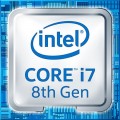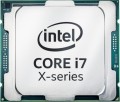Code name
This parameter characterizes, firstly, the technical process (see above), and secondly, some features of the internal structure of processors. A new (or at least updated) codename is introduced to the market with each new CPU generation; chips of the same architecture are "coevals", but may belong to different series (see above). At the same time, one generation can include both one and several code names.
Here are the most common Intel codenames today:
Cascade Lake-X (10th gen),
Comet Lake (10th gen),
Comet Lake Refresh (10th generation),
Rocket Lake (11th generation),
Alder Lake (12th generation),
Raptor Lake (13th generation),
Raptor Lake Refresh (14th generation).
For AMD, this list includes
Zen+ Picasso,
Zen2 Matisse,
Zen2 Renoir,
Zen3 Vermeer,
Zen3 Cezanne,
Zen4 Raphael and
Zen4 Phoenix.
Socket
The type of connector (socket) for installing the processor on the motherboard. For normal compatibility, it is necessary that the CPU and motherboard match the socket type; before buying one and the other, this point should be clarified separately
The following sockets are relevant for Intel processors today:
1150,
1155,
1356,
2011,
2011 v3,
2066,
1151,
1151 v2,
3647,
1200 and
1700.
In turn, AMD processors are equipped with the following types of connectors: <
AM3/AM3+,
FM2/FM2+,
AM4,
AM5,
TR4/TRX4,
WRX8.
In box
This parameter does not so much indicate the difference in technical characteristics as it describes the packaging and computer Hardware.
-
OEM. The tray package, or OEM, provides that the processor is supplied without a cooling system (CO) and without a branded box - the packaging is usually a simple antistatic bag. You need to select and install cooling for such a CPU separately. In addition, components in tray packaging often have a shorter warranty period than in the box version, and their additional equipment is more meager. On the other hand, such solutions are noticeably cheaper, and the absence of CO allows you to select it separately, without relying on the manufacturer’s choice.
—
BOX (without cooler). Processors packed in branded boxes, but not equipped with cooling systems (CO). Such packaging is more expensive than OEM, but the warranty period for “boxed” chips is usually much longer (for example, three years instead of one). The absence of a cooler, on the one hand, requires additional efforts to find and install a coolant; on the other hand, cooling can be selected according to your own criteria, without relying on the manufacturer’s choice. However, it is worth considering that when installing a cooler yourself, it is difficult to achieve the same efficiency from it as with a factory installation; This is especially critical if the CPU is planned to be intensively overc
...locked; for such modes it is better to choose a box package with a cooler.
— BOX (with cooler). Processors packed in branded boxes and equipped with cooling systems (CO). Box packaging itself is more expensive than OEM, but this is compensated by a number of advantages - in particular, more extensive packaging and a longer warranty period. As for the presence of a cooler in the kit, it further increases the overall cost of the CPU, but eliminates the need to bother with the selection and installation of a separate cooling system. It is worth noting that the factory installation of CO allows you to achieve higher efficiency than independent installation, so for high loads (including overclocking) this particular configuration option is best suited. On the other hand, before purchasing, you need to check whether there is enough space in the case for a cooler: complete coolers can be quite bulky, and removing them can be difficult.
— MPK (with cooler, without box). The multipack package, or MPK for short, implies the delivery of a processor with a standard boxed cooling cooler, but without a box and accompanying documentation. The processor is usually packaged in a simple antistatic bag. The MPK package is more expensive than OEM due to the presence of a cooling system, but cheaper than BOX (with cooler) due to the absence of a box. At the same time, the multipack kit usually has a shorter warranty period than the BOX delivery option (with a cooler).Clock speed
The number of cycles per second that the processor produces in its normal operating mode. A clock is a single electrical impulse used to process data and synchronize the processor with the rest of the computer system. Different operations may require fractions of a clock or several clocks, but anyway, the clock frequency is one of the main parameters characterizing the performance and speed of the processor — all other things being equal, a processor with a higher clock frequency will work faster and better cope with significant loads. At the same time, it should be taken into account that the actual performance of the chip is determined not only by the clock frequency, but also by a number of other characteristics — from the series and architecture (see the relevant paragraphs) to the number of cores and support for special instructions. So it makes sense to compare by clock frequency only chips with similar characteristics belonging to the same series and generation.
TurboBoost / TurboCore
The maximum processor clock speed that can be reached when running in Turbo Boost or Turbo Core overclocking mode.
The name "Turbo Boost" is used for the overclocking technology used by Intel, "Turbo Core" for the solution from AMD. The principle of operation in both cases is the same: if some cores are not used or work under a load below the maximum, the processor can transfer part of the load from the loaded cores to them, thus increasing computing power and performance. Operation in this mode is characterized by an increase in the clock frequency, and it is indicated in this case.
Note that we are talking about the maximum possible clock frequency — modern CPUs are able to regulate the operating mode depending on the situation, and with a relatively low load, the actual frequency may be lower than the maximum possible. See "Clock frequency" for the general meaning of this parameter.
L1 cache
The amount of Level 1 (L1) cache provided by the processor.
Cache is an intermediate memory buffer into which the most frequently used data from RAM is written when the processor is running. This speeds up access to them and has a positive effect on system performance. The larger the cache, the more data can be stored in it for quick access and the higher the performance. Level 1 cache has the highest performance and the smallest volume — up to 128 KB. It is an integral part of any processor.
L2 cache
The amount of Level 2 (L2) cache provided by the processor.
Cache is an intermediate memory buffer into which the most frequently used data from RAM is written during processor operation. This speeds up access to them and has a positive effect on system performance. The larger the cache, the more data can be stored in it for quick access and the higher the performance. Level 2 cache volume can reach 12 MB, the vast majority of modern processors have such a cache.
L3 cache
The amount of cache level 3 (L3) provided in the processor.
Cache is an intermediate memory buffer into which the most frequently used data from RAM is written when the processor is running. This speeds up access to them and has a positive effect on system performance. The larger the cache, the more data can be stored in it for quick access and the higher the performance.
IGP
Model of the integrated video core installed in the processor. See "Integrated Graphics" for details on the core itself. And knowing the name of the graphics chip model, you can find its detailed characteristics and clarify the performance of the processor when working with video.
In terms of specific models, Intel processors use
HD Graphics, specifically
510,
530,
610,
630 and
UHD Graphics with models
610,
630,
730,
750,
770. AMD chips, in turn, can carry
Radeon Graphics,
Radeon R5 series,
Radeon R7 series, and
Radeon RX Vega graphics cards.
At the same time,
processors without a graphics core are appropriate for purchase if you plan to fully assemble a PC with a graphics card. In this case, overpaying for a
processor with a graphics core does not make sense.

